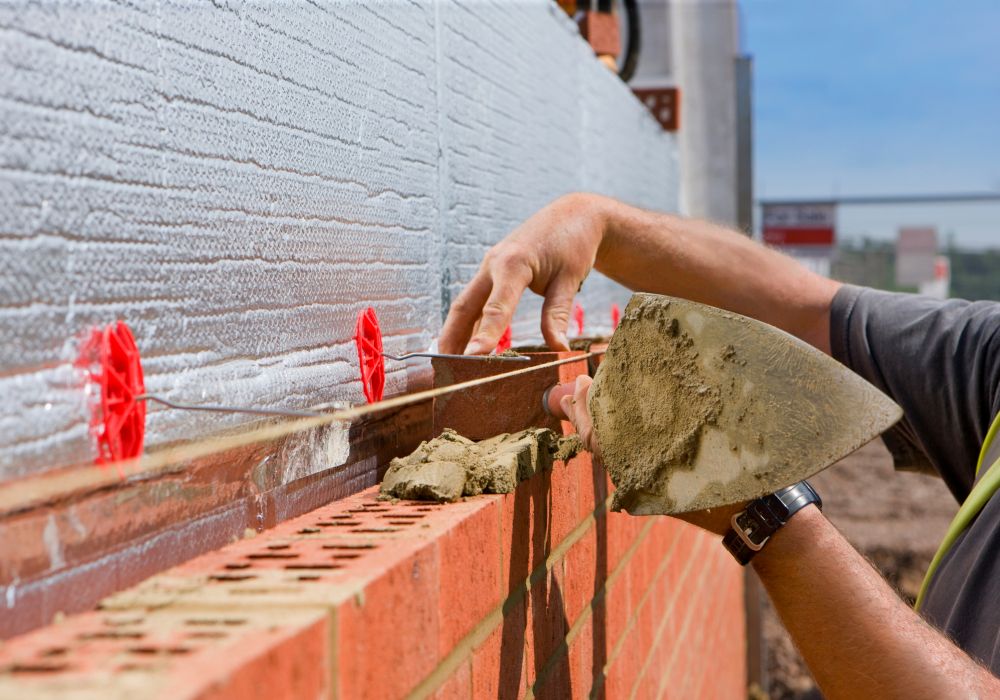5 Differences Between Fly Ash & Regular Bricks
The word "brick" technically refers to a block made of baked clay, but it is now frequently used to refer to various construction blocks that have undergone chemical curing.

Have you ever seen a building getting constructed? Well, if we ask you what is the most important material or ingredient used in construction, we are sure that most of you will answer either cement or bricks. When you’re getting your dream home built, it’s important to apply the same level of scrutiny to the bricks, as you may have applied to all the other construction elements in your home!
A brick is a sort of material used to construct masonry structures such as walls, sidewalks, and other features. The word "brick" technically refers to a block made of baked clay, but it is now frequently used to refer to various construction blocks that have undergone chemical curing.
Bricks can be attached to one another by mortar, glue, or by overlapping. Bricks are made in large quantities and come in a wide range of categories, and sizes that suit different needs.
An Introduction To Regular Clay Bricks
You might already be aware of regular clay bricks that have been utilized since the dawn of civilization. It is a typical building material that can be found everywhere. Clay and water are readily combined to create clay bricks.
Thanks to the evolution of hardening techniques from basic solar drying to being added to industrialized ovens, bricks became stronger and more durable over time.
Unlike most man-made products, clay bricks don't deteriorate over time and need minimal to no maintenance or repair. Clay bricks are resistant to rust, won't corrode, degrade, decay, twist, or distort, and they don't need to be painted or given any other treatment to keep their appearance and longevity. Also, keep in mind that with moisture levels, clay bricks enlarge or shrink, however, the variation in size is so minimal that it doesn’t really make any difference to the home itself.
Also Read:
- 12 Tips About Home Construction
- 10 Things to Consider Before Choosing Your Construction Material Suppliers
- How do I Find the Best Building Material Suppliers Near Me?
- What are the Different Types of Bricks Used in Construction?
A Look At Fly Ash Bricks
Fly ash bricks are a relatively new and improved type of bricks. Fly ash, cement, sand, and water make up the fundamental components of fly ash bricks.
Fly ash bricks have a highly pleasing appearance because of their excellent, cement-like color, consistent size, and smooth polish. The amount of mortar used for brickwork and plastering is reduced by almost 40–50%.
These bricks are considerably more impermeable and durable. Because they are less porous, these bricks retain less moisture, which lessens wall wetness during the monsoon season. Additionally, they are very resilient to water, sulphate, and mild acids.
Fly ash bricks are more environmentally beneficial because they are created from byproducts of the burning of coal in thermal power plants. This further means that fly ash bricks cause no pollution or harm to the environment - in fact, they are a great way to reduce waste.
Fly Ash Bricks VS Regular Clay Bricks: Top 5 Differences
Now that you know about the basics of fly ash bricks and regular clay bricks, let us move a bit further and compare both of them.
● Ingredients Used
When it comes to fly ash bricks, cement, lime, sand, fly ash, and gypsum are used to create fly ash bricks. Industries that use coal as fuel release undesirable ash and soot, which produces fly ash. This fly ash is utilised as a raw material in the production of fly ash bricks.
Clay, sand, lime, iron oxide, and magnesia are the main ingredients used to make red bricks. Bricks are made using natural soil that is readily available in the area.
● Strength And Quality
There can be variations in the strength of regular bricks while fly ash has more consistency in strength. Similarly, the consistency in quality is also low in clay bricks whereas it is quite consistent in fly ash bricks.
● Finishing
Red bricks look discordant, with one side being smooth and the other being rough - a coating of polishing is needed to produce a smooth surface. Fly ash bricks, on the other hand, have a uniform, smooth texture on both sides. As a result, they need less plastering during construction.
● Environmentally friendly
Red brick production necessitates the removal and manipulation of topsoil, which might or might not be replenished. However, fly ash bricks are more ecologically friendly because they are manufactured using a by-product that is generally thrown away. Using Fly ash brick results in the preservation of natural resources and the safeguarding of the environment.
● Resistance From Termites
Termites are typically associated with wood, but they can be a big problem once they get into your walls and attack the bricks! Regular bricks are more prone to termites as they are made up of clay. On the other hand, fly ash bricks are termite-resistant as they are formed of inorganic ingredients.
To ensure that your house is getting constructed the right way, you must have enough knowledge about all the materials used including the bricks. Now that you know the difference between clay bricks and fly ash bricks, you can make the right choice for your building's construction!
Why Choose Hippo Stores?
Once you decide whether you want to invest in regular bricks or fly ash bricks, you must make sure that you buy them from a reliable provider like Hippo Stores. We have ample experience in the industry and source our products only from the most reliable names. As a result, we are confident about providing our customers with great quality materials and a positive purchase experience. We also offer our products at nominal rates, so head down to our stores or visit our website today!
Watch Video: